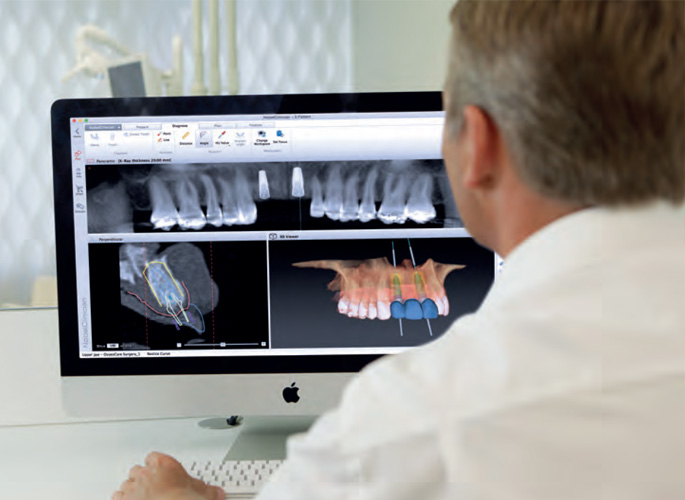
Benefits of Dental Implants
• It is the longest lasting options for tooth replacement (If the appropriate bone is present)
• It is the most like your own teeth/tooth
• Does not damage neighbouring teeth
• The care and cleaning of the implants is most like your natural teeth/tooth
What is a Dental Implant?
A dental implant is an artificial replacement for a missing natural tooth or an anchor to help support crowns, bridges, even dentures securely in place. When a tooth is extracted, and that area of the jaw has nothing to support, the level of bone at that site will decrease or shrink, but as a result of placing a titanium dental implant you are less likely to lose bone levels.
Implants have become the standard of care to replace lost teeth. With a success rate of 90% or greater. In most cases, the implants will restore the dentition to as close to natural teeth as possible. Implant placement can prevent unnecessary weakening of neighbouring teeth, as well as, less stress and strain on the remaining teeth in the mouth.


Years of Experience
At Heritage Dental Centre we are elated to offer to our patient’s in-office implant dental restorations. Beginning with treatment planning, and discussing various treatment options, to fabricating an end result prior to treatment to allow the patient a visualization of their final result.
Years of successfully placing implant restorations has led to a preferred partnership with Nobel Biocare, one of the world leaders in innovated esthetic solutions. As well, Dr. Germain is a member of the Academy of Osseointegration and the International Congress of Oral Implantologists (ICOI).
Our office is equipped to comfortably accomodate all needed procedures for your treatment. From grafting to allow for optimal bone levels, to placing of the implant using several different systems, and finally the placement of the final restoration from a single tooth to the full mouth.
Getting Started
Prior to an implant is placed, a CT Scan of both the upper and lower arches is done to determine the volume of bone remaining in the area. If the bone levels are too low to support the implant, a Bone Graft (this procedure involves placing either real or synthetic bone material at the repair site that helps to stimulate bone formation) will be done to increase the height and the width of the bone.


At the first appointment the dentist will insert the implant into your jawbone. Your next appointment will not be for several weeks after the intial placement of the implant, to allow time for your bone to intergrate (fuse) around the implant. Once the healing time has passed, an impression will be done of the implant for the final restoration to be placed on top of the implant.
Caring for a dental implant is the same as caring for your own natural teeth. Plaque can build up around the implants so it is important to maintain a regular hygiene schedule.
Dental Implants Patient Care Packages and Consent Forms
Dental Implant and Surgical Consent (Dr. Joe Germain)
Dental Implant and Denture Consent and Care Package (Dr. Joe Germain)
Frequently Asked Questions About Dental Implants
Implant Supported Crowns
Conventional Implant Supported Bridge
Screw Retained Implant Supported Bridge
Implant Supported Bridge Superstructure with Individually Cemented Crowns
Implant Supported Bridge Cemented to Custom Abutments
Fixed Detachable Hybrid Implant Supported Bridge

